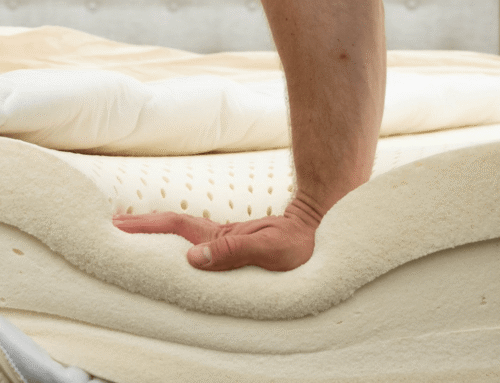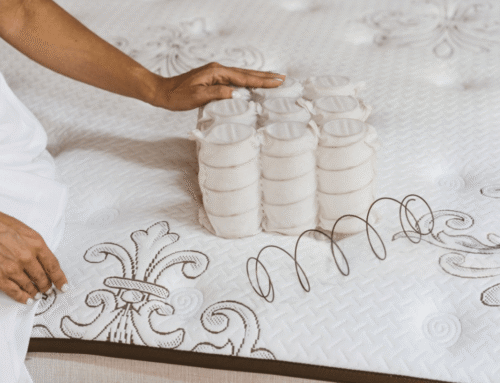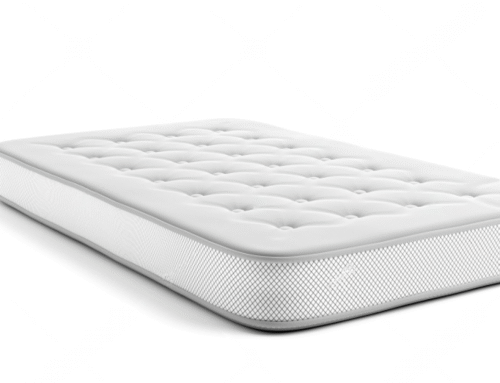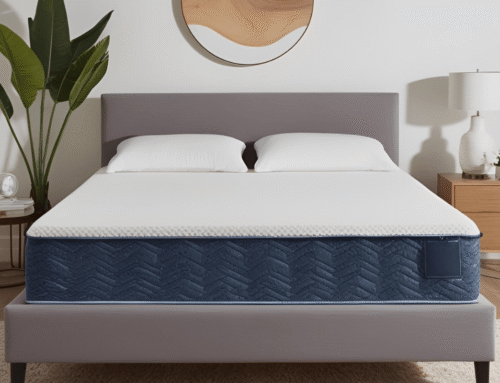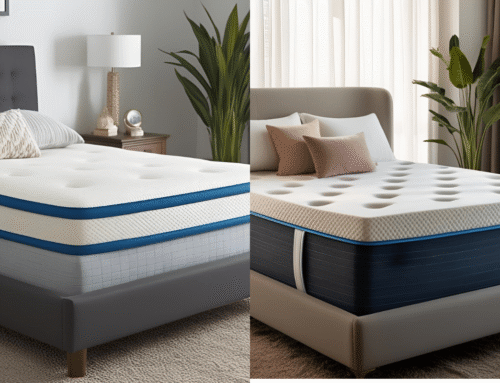A soft mattress can leave you sore and restless, especially if your back feels out of alignment. Sinking too much might feel comfortable at first, but over time, it can cause pain and make it harder to sleep well. Instead of replacing your mattress, a few simple changes can help improve support.
A soft mattress, typically made from materials like memory foam or latex, molds to your body for a cozy feel but may lack the support your spine needs. This can lead to misalignment, causing discomfort, especially for back sleepers or those with back pain.
What is a soft mattress good for? Soft mattresses are ideal for side sleepers and those with joint pain, as they provide extra cushioning and reduce pressure on sensitive areas. However, a soft mattress may hurt your back because it doesn’t provide the proper support for spinal alignment. To sleep more comfortably on a soft mattress with a bad back, adding a firm topper, placing plywood underneath, or rotating the mattress can help align your spine and reduce pressure points.
A firm mattress topper adds structure, and placing plywood under the mattress creates a sturdier base. Rotating or flipping the mattress helps too, since sagging can make it feel even softer. These fixes cost less than a new mattress and can help in your sleep quality.
We will share practical steps to firm up your mattress and bring back proper support. These adjustments take little effort and work well for many sleepers. Let’s get your bed feeling right again.
Key Takeaways
- A firm mattress topper is an easy fix that adds support and prevents your body from sinking too deep during sleep.
- Flip or rotate your mattress regularly to distribute wear and reduce sagging, ensuring a firmer surface for rest.
- Placing plywood under your mattress strengthens the base, eliminates dips, and makes the bed feel more supportive overall.
- Lower room temperatures help memory foam maintain its firmness, making your mattress more supportive throughout the night.
- A mattress protector or pad provides a slight firmness boost and helps extend the life of your mattress.
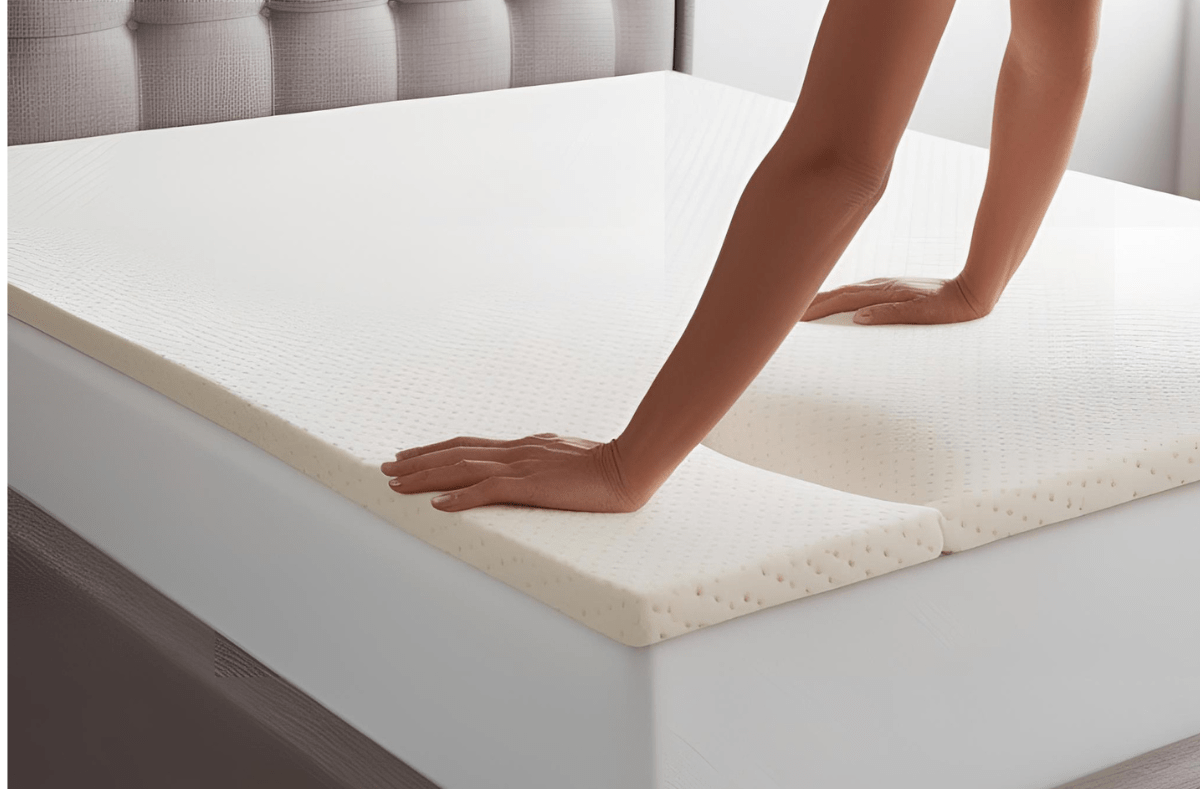
Use A Firm Mattress Topper
A firm mattress topper adds an extra layer of support without replacing your entire bed. High-density memory foam, latex, and firm polyfoam are solid choices since they help keep your body from sinking too much. This can be especially useful if your mattress feels too soft or lacks proper support.
One of the best parts? You get an immediate change in feel without committing to a whole new mattress. It’s also easy to adjust later by swapping or removing the topper if your sleep preferences shift. Just be sure to choose the right thickness, as too much thickness might feel stiff, and too thin won’t do much.
Toppers are great for different sleep positions, but side sleepers might need a bit of cushioning on top. If you’re dealing with back pain, a firmer topper can help keep your spine aligned. Just make sure it fits your mattress properly so it doesn’t slide around while you sleep.
Using a firm mattress topper is an effective way to fix a too soft mattress and sleep comfortably on a soft mattress. It provides added support while still allowing you to enjoy the comfort of your mattress.
Flip Or Rotate The Mattress
Flipping a mattress is an option if yours allows it, and it’s definitely something we recommend trying. It helps even out the wear and can give the mattress a firmer feel, especially if the top layer has softened over time. Flipping is a simple and effective way to bring back some of the original support.
If your mattress can’t be flipped, rotating it 180 degrees works just as well. This moves the areas that bear the most pressure, like your hips and shoulders, to different parts of the mattress. It’s amazing how much of a difference it makes in how it feels, even after just one rotation.
We suggest rotating or flipping every few months to maintain support and comfort over time. It’s an easy way that can keep your mattress in good shape longer, so you can get the most out of it without needing to replace it sooner than necessary.
Check The Bed Frame And Support System
If your mattress feels too soft, it might not always be the mattress. The bed frame or base could be the issue. A weak or broken frame tends to cause sagging and make the mattress feel less supportive. Adding extra slats or switching to a platform bed with solid wood slats, spaced no more than 3 inches apart, can help improve the support.
Box springs can lose their strength over time. If yours is old, replacing it or using a bunkie board can give the extra firmness needed, and this can change how your mattress feels without getting a new one.
Quick Tips to Improve Mattress Support:
- Add more slats to your bed frame for better support.
- Consider switching to a platform bed for a sturdier base.
- Replace old box springs or use a bunkie board for added firmness.
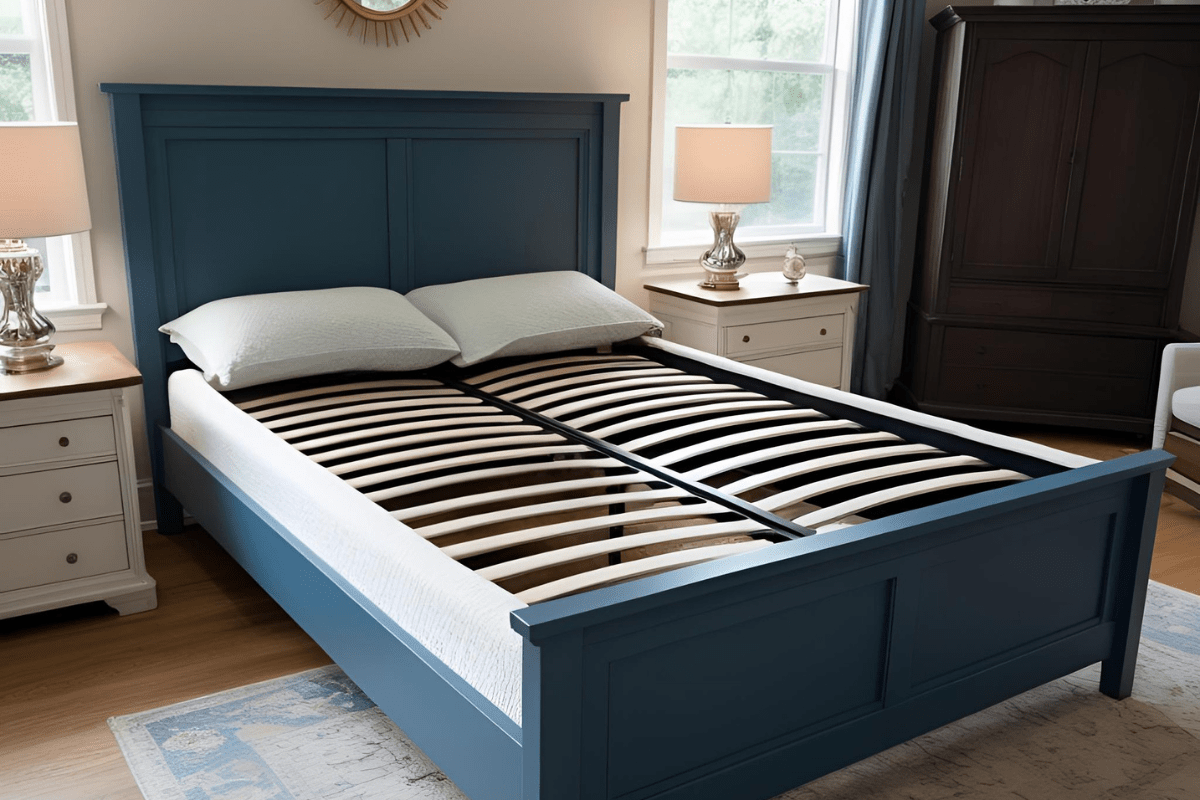
Add Plywood Under The Mattress
Adding plywood under your mattress is a simple and affordable way to get more support. All you need is a flat piece of plywood placed between your mattress and the box spring. It creates a sturdier foundation and instantly reduces any sagging. The plywood should be smooth and free of splinters to avoid damage to your mattress or injury. Covering it with a fabric sheet adds a little extra layer of protection and keeps everything nice and clean.
This trick is great if you’re dealing with an old or soft mattress and don’t want to spend a lot on a replacement. This adjustment can help give your bed a firmer and more supportive feel, simply by enhancing the base beneath it.
Lower The Room Temperature
Lowering the room temperature is also an effective way to enhance your sleep, especially if your mattress has memory foam. Heat can cause memory foam to soften and make the mattress feel a bit too squishy. By turning down the temperature, the foam stays firmer and gives you better support throughout the night. A cooler room, ideally around 65°F, doesn’t just help firmness, but it also helps in improving overall sleep quality. A cooler environment helps us fall asleep faster and stay asleep longer. It’s like creating a more comfortable atmosphere for rest.
What’s great about this tip is that it’s completely free. You don’t need to invest in any fancy gadgets or accessories, just adjust your thermostat, and you’ll likely notice a difference. This small change in room temperature can make a noticeable improvement in your sleep.

Use A Mattress Protector Or Pad
A mattress protector or quilted pad can subtly adjust the firmness of your mattress, especially if it feels a bit too soft. Those made with dense or tightly stitched fabrics give that extra bit of structure. It’s a simple way to improve comfort without completely changing how your bed feels. Mattress protectors can also help preserve the lifespan of your mattress, especially if it’s starting to show signs of wear. The right pad can act as a barrier to keep your mattress cleaner and better protected from spills, dust, and body oils.
Using a protector or quilted pad are easy ways if you need a slight firmness boost. It’s not a big change, but it does give that added firmness where your mattress might be lacking. It helps keep your mattress in good shape longer without sacrificing comfort.
Let The New Mattress Fully Expand
Let your new mattress have some time to settle, especially if it came in a box. Foam mattresses usually need a bit of patience, up to 72 hours, to fully expand and firm up. It’s pretty normal for it to feel softer at first, but over time, it’ll get firmer. During those first few days, try not to overload it with weight, like placing heavy items or letting pets jump around. The foam needs space to breathe and expand properly, so giving it room will help it settle into its best form.
Trust the process and let your mattress take shape on its own. By the end of the 72-hour period, you should notice a difference in how it feels. Just give it that initial break-in time, and you’ll be good to go.
Know When It’s Time For A New Mattress
If your mattress feels softer than it should, and you’ve tried everything to fix it, it’s probably time to replace it. Mattresses typically last between 7 and 10 years, depending on the materials. Once it starts sagging, especially in the middle, no topper or tips will restore its comfort. Getting a firmer mattress can really help with sleep quality, back support, and overall mood. When a mattress has worn out, a new one can improve your sleep quality.
A new mattress doesn’t just improve comfort, but it can really support better posture and help you feel more rested. Next time you shop for one, knowing the signs of wear and understanding what makes a mattress feel too soft will help you choose the right option.
Signs it’s time for a new mattress:
- Sagging or visible indentations.
- Increased morning aches or pains.
- Poor sleep quality over time.
When deciding for a new mattress, consider how to know if you need a soft or firm mattress and which firmness is right for you, soft or medium mattress. Knowing your preferences for softness or firmness can guide you to the right choice for support and comfort.
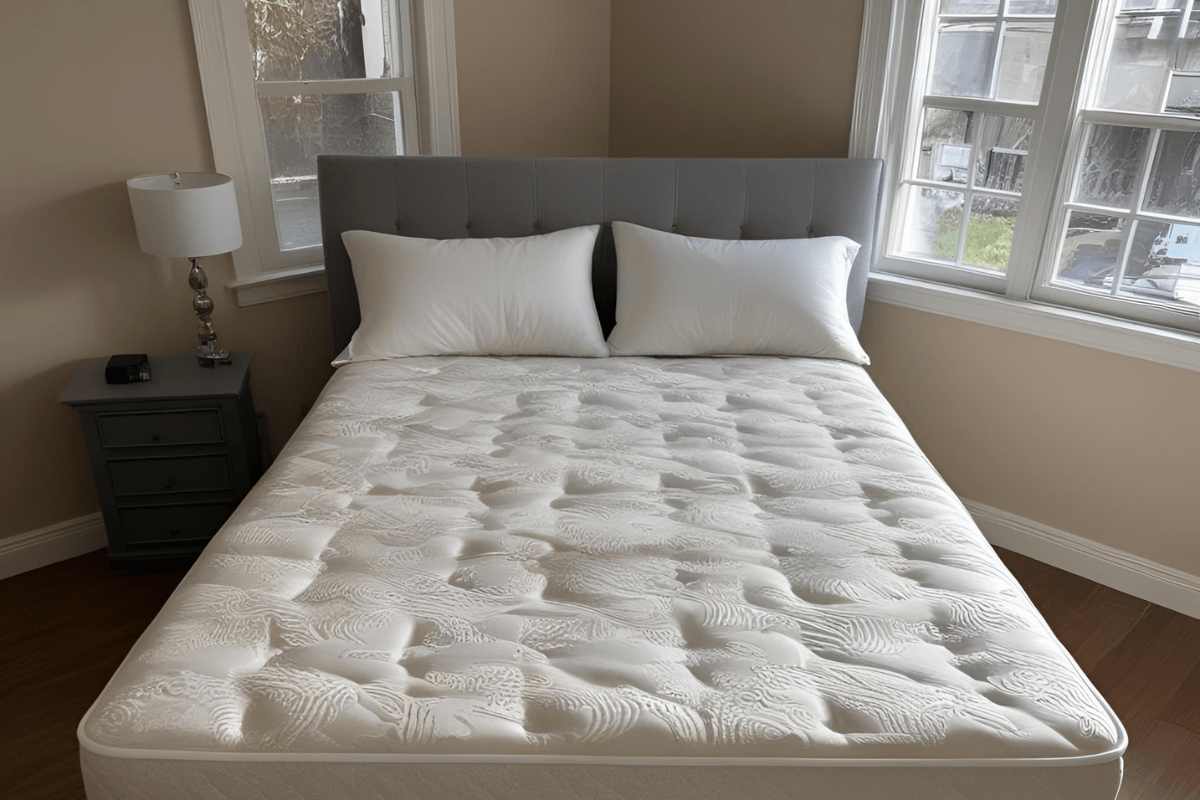
Replace Worn-Out Mattress Parts
Over time, some parts of your mattress, like springs or foam, start to wear out. Instead of getting a whole new mattress, consider replacing the worn-out components. If your mattress is a hybrid or has removable layers, you might be able to swap out just the damaged sections.
Several mattress brands sell replacement inserts, or you might find repair kits designed for specific models. This option is especially helpful if you want to restore the firmness and comfort of your mattress without going through the hassle of buying a new one.
Replacing only the worn-out parts is a cheaper way to refresh your sleep setup. It’s also often more sustainable than tossing the entire mattress. It’s worth checking out what options are available for your mattress brand before deciding on a full replacement.
Final Thoughts
You don’t have to stick with a mattress that feels too soft. There are plenty of ways to firm up your bed without spending a fortune. A simple firm topper or adjusting your bed frame could provide the support you need and give you a more restful night.
If you’re tired of sinking into your mattress, these tips can help transform your sleep. Adding a topper or adjusting the bed frame can help, so you don’t have to compromise on comfort. These easy ways can help you sleep soundly and wake up feeling refreshed. Whether you go with a topper or tweak your setup, the right choice affects how you sleep.
Sometimes, small changes can have a big impact. A firm bed can improve your overall sleep quality and how you feel in the morning. Whether you prefer a firmer mattress or just need a temporary fix, these adjustments provide practical solutions without the need for a complete mattress replacement.
The choice between a firm or soft mattress depends on your body’s needs. A firmer mattress often provides better support for back pain and promotes healthier spine alignment, while a softer mattress can offer more comfort for side sleepers or those with joint pain. A firmer mattress is generally better for lower back pain, helping with spinal support, while a softer mattress may be more comfortable for those who need cushioning.
The right mattress, whether firm or soft, contributes to better health by aligning your spine and supporting restful sleep.

